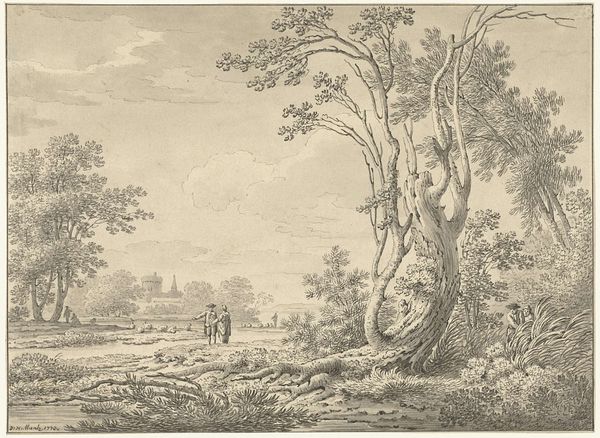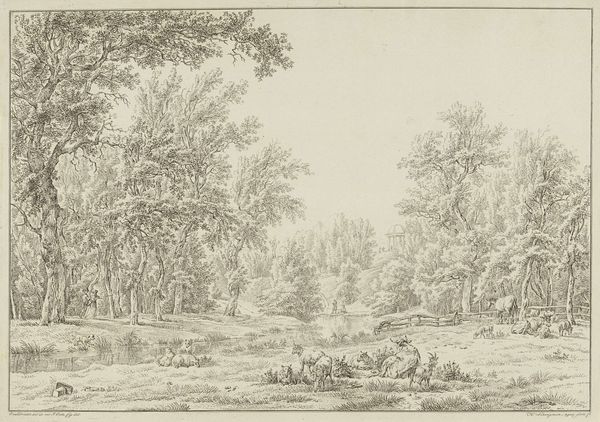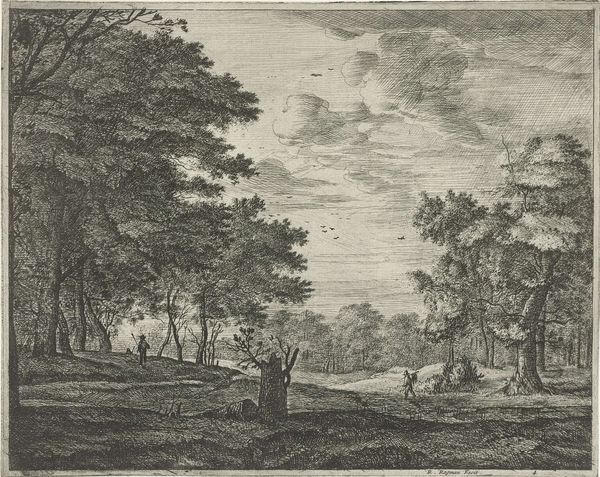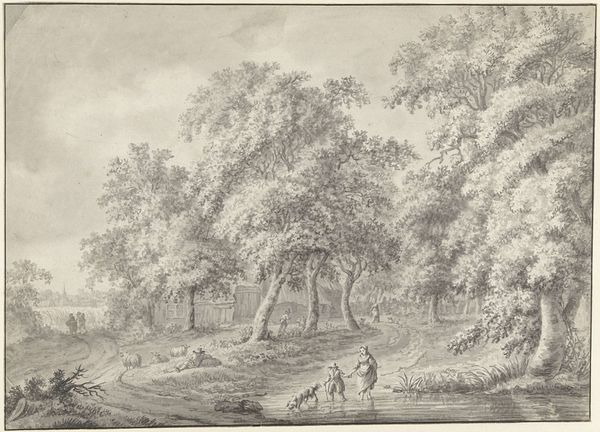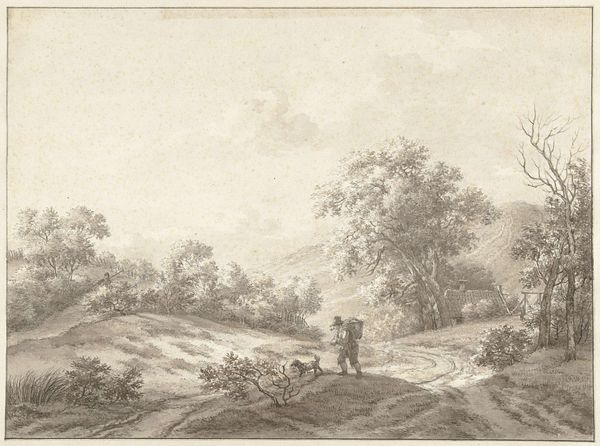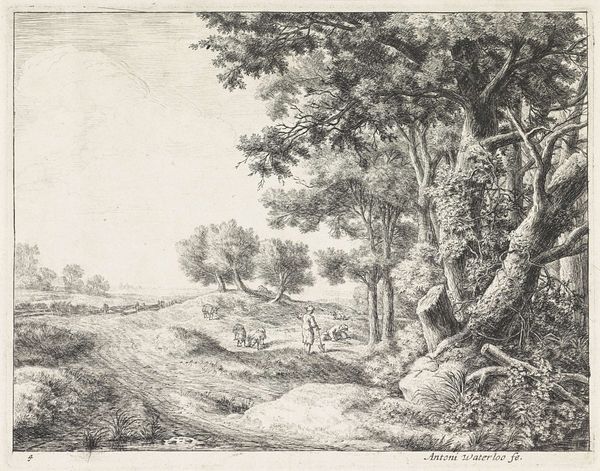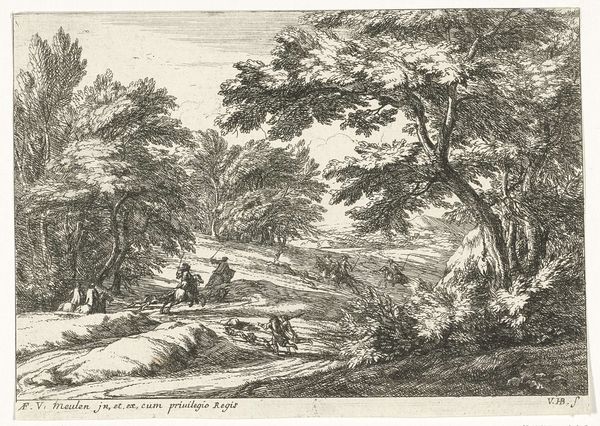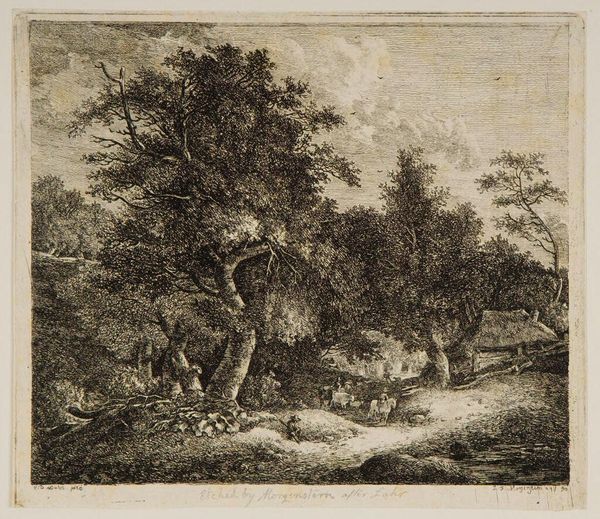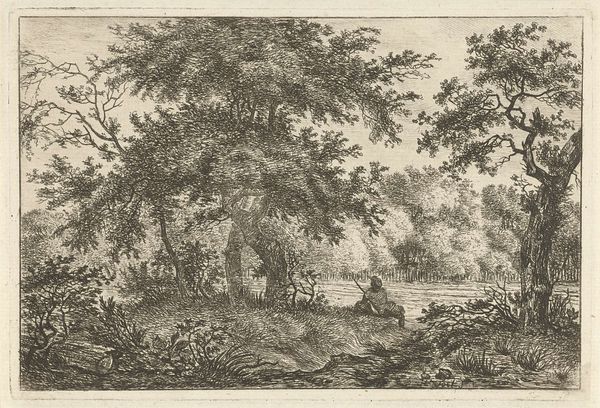
etching
#
etching
#
landscape
#
etching
#
romanticism
#
history-painting
Dimensions: height 471 mm, width 368 mm
Copyright: Rijks Museum: Open Domain
Editor: So, this etching is titled *Arcadian Landscape with a Statue of Janus* by Hermanus Fock, created sometime between 1781 and 1822. The composition is so delicate and detailed, almost dreamlike. It really evokes a feeling of classical nostalgia. What jumps out to you when you look at this work? Curator: The prominent placement of the Janus statue immediately strikes me. Janus, the Roman god of beginnings, transitions, and doorways, with his two faces looking to the past and future. He represents duality and the cyclical nature of time. Why place such an emblem within a pastoral, Arcadian setting? Editor: Interesting! So the landscape isn't just decorative, it’s a space for contemplation about time itself? Curator: Precisely. Arcadian landscapes were often idealized visions of a simple, harmonious past, a Golden Age. But placing Janus there suggests that even in this idyllic world, the weight of history and the uncertainty of the future are ever-present. What emotions do you think Fock wanted to stimulate, placing those historical considerations in this work? Editor: I guess it complicates the idea of simple happiness. Like, even in paradise, we're still caught between looking back and looking ahead. It's less about pure escapism and more about understanding our place in a larger timeline. I hadn't considered that the figure was meant to unsettle the balance. Curator: It makes you consider whether "Arcadia" can truly exist outside the realm of myth. The past, present, and future all converge here, framed by the serene, yet somewhat melancholic landscape. The people seem like a single family traveling. Do the dog and cows accompanying them provide a familiar, reliable continuity to them? Editor: I see what you mean. Thinking about it, the symbol of Janus combined with this simple family and the historical-feeling countryside presents an elegant, complex, and affecting cultural picture of Fock’s moment. Thanks, that was insightful! Curator: And thank you, you helped me think about new perspectives, thinking how to see the landscape as something timeless that everyone could experience across time.
Comments
No comments
Be the first to comment and join the conversation on the ultimate creative platform.
